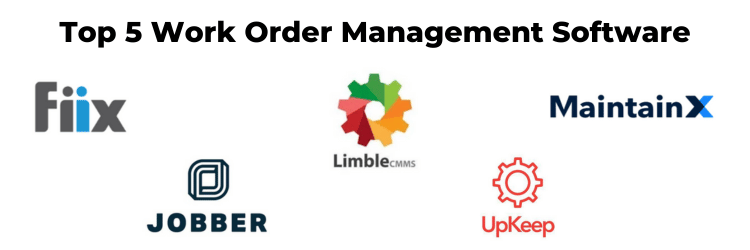
A work order is a document used in the construction industry to formally request and authorize specific tasks. It serves as a directive that outlines the job details, providing instructions and essential information to the individuals or teams responsible for carrying out the work.
In this comprehensive guide into the world of work orders, we explore their importance, different types, and how to create and manage them effectively. We created a free printable work order that you can easily edit and customize. Additionally, we will discuss the benefits of implementing a work order management system to streamline your processes and enhance productivity.
So, whether you are new to work orders or looking to optimize your existing system, join us as we uncover the critical elements that provide valuable insights into their role in business operations.
Table of Contents
Introduction to Work Orders: What Are They?
A work order is a document that provides all the information about a task and outlines a process for completing that task. Work orders can vary in complexity and format depending on the nature of the task and the industry. They can be generated for various purposes, such as general work orders, preventive maintenance, corrective actions, emergency repairs, or routine inspections.
Different Types of Work Orders
Understanding the different types of work orders is essential for effectively managing tasks and addressing various operational needs. In this section, we will explore some of the most common types of work orders.
General Work Order
Preventive Maintenance Work Orders
Preventive maintenance work orders are created to schedule and perform routine maintenance tasks to prevent equipment breakdowns, extend asset lifespan, and ensure optimal performance. These work orders typically include tasks such as inspections, lubrication, cleaning, calibration, and other proactive maintenance activities. Preventive maintenance work orders help in identifying and addressing potential issues before they result in costly breakdowns or downtime.
Corrective Work Orders
Corrective work orders are generated in response to equipment failures, malfunctions, or reported issues. They involve repairing or replacing faulty equipment, fixing broken components, or resolving performance issues. Corrective work orders aim to restore equipment or systems to their normal functioning state and minimize disruptions to operations. These work orders often require prompt attention to prevent further damage or safety risks.
Emergency Work Orders
Emergency work orders are created for urgent situations that require immediate attention. These can include critical equipment failures, safety hazards, environmental emergencies, or any other unforeseen circumstances that pose an immediate threat to the organization’s operations. Emergency work orders prioritize rapid response and resolution to mitigate risks and minimize any potential damage or disruption.
Inspection Work Orders
Inspection work orders are generated to conduct thorough assessments, audits, or examinations of assets, facilities, or processes. These work orders focus on evaluating compliance with safety standards, regulatory requirements, operational efficiency, or quality control measures. Inspection work orders help in identifying any deficiencies, non-compliance issues, or areas for improvement, ensuring that the organization operates in accordance with established guidelines.
These are just a few examples of the different types of work orders commonly used in business operations. Organizations need to identify and utilize the appropriate type of work order based on the specific needs and requirements of each task. By understanding the different types, organizations can efficiently manage their maintenance, repairs, emergencies, and inspections, ensuring smooth operations and optimal performance.
How to Create an Effective Work Order
Creating an effective work order is essential for ensuring clear communication, accurate task execution, and efficient workflow within an organization. In this section, we will explore the key elements of a work order, the steps involved in creating one, and common mistakes to avoid.
Key Elements of a Work Order
A well-designed work order contains several essential elements that provide comprehensive information about the task at hand. These elements include:
- Title: A clear and descriptive title that summarizes the nature of the work order.
- Description: A detailed description of the task or job to be performed, including specific instructions, requirements, and any relevant attachments or reference materials.
- Priority: An indication of the urgency or importance of the task, allowing for proper prioritization.
- Assigned Personnel: The name or team responsible for carrying out the task, ensuring accountability and clear assignment of responsibilities.
- Deadline: A specific date or timeline by which the task should be completed.
- Location: The physical location or area where the task needs to be performed.
- Resources: A list of the required resources, such as equipment, materials, tools, or specialized skills.
- Procedures: Step-by-step instructions or procedures to be followed to complete the task accurately and efficiently.
- Safety Considerations: Any specific safety precautions or guidelines to be adhered to during the task execution.
Steps in Creating a Work Order
Creating an effective work order involves a systematic approach to ensure clarity and accuracy. The following steps can be used to create succesfull work orders:
- Identify the Task: Clearly define the task or job that needs to be accomplished, considering its scope, objectives, and any specific requirements.
- Gather Information: Collect all relevant information, including equipment details, maintenance history, specifications, and any additional documentation needed for the work order.
- Determine Priority: Assess the urgency and importance of the task to assign the appropriate priority level.
- Define Resources: Identify the necessary resources, such as equipment, materials, tools, and personnel, required to complete the task successfully.
- Draft the Work Order: Use a standardized work order template or system to fill in the key elements discussed earlier, ensuring clear and concise communication.
- Review and Approve: Review the work order for accuracy, completeness, and compliance with organizational standards. Obtain necessary approvals, if required.
- Distribute the Work Order: Share the work order with the assigned personnel, ensuring they have access to all relevant information and attachments.
- Monitor and Track Progress: Regularly monitor the progress of the work order, track any updates or changes, and address any issues or obstacles that may arise.
Common Mistakes to Avoid
When creating work orders, it is important to be aware of common mistakes that can hinder their effectiveness. Some of these mistakes include:
- Incomplete or Inaccurate Information: Failing to provide all the necessary details or including incorrect information can lead to confusion and errors during task execution.
- Lack of Clarity: Unclear instructions or ambiguous language can result in misinterpretation and inefficient task completion.
- Poor Organization: Disorganized work orders can make it difficult for personnel to locate relevant information, leading to delays or mistakes.
- Ignoring Safety Considerations: Neglecting to include safety guidelines or precautions can pose risks to personnel and equipment.
- Failure to Update: Neglecting to update or revise work orders as needed can lead to outdated information and incorrect task execution.
By understanding these key elements, following the steps in creating a work order, and avoiding common mistakes, organizations can ensure the effectiveness and efficiency of their work order management process. This promotes clear communication, accurate task execution, and streamlined workflow throughout the organization.
Work Order Management Systems
Work order management systems are software solutions designed to streamline and automate the process of creating, tracking, and managing work orders within an organization. These systems provide a centralized platform for efficient work order management, enhancing productivity, and improving overall operational efficiency. In this section, we will explore the benefits of implementing a work order management system, key features to look for, and how to effectively implement such a system.

Utilizing platforms such as Fiix, Jobber, Limble, UpKeep, and MaintainX can significantly enhance your business’s efficiency in managing work order forms.
Fiix offers comprehensive maintenance management, streamlining work order creation and tracking.
Jobber specializes in field service management, allowing businesses to generate and organize work orders while optimizing scheduling seamlessly.
Limble focuses on preventive maintenance, aiding in creating work orders for routine tasks to minimize downtime.
UpKeep simplifies the work order process through a user-friendly interface, making it easy to create, assign, and track tasks.
MaintainX excels in mobile-first maintenance management, providing a platform for efficient work order creation, collaboration, and real-time updates.
These platforms collectively contribute to a more organized, automated, and effective approach to handling work order forms, ultimately enhancing overall business operations.
Benefits of a Work Order Management System
- Streamlined Workflow: Work order management systems eliminate the need for manual paperwork and inefficient manual processes. They provide a digital platform where work orders can be created, assigned, tracked, and updated in real-time, ensuring a streamlined workflow and reducing delays.
- Enhanced Communication and Collaboration: With a work order management system, all stakeholders can access and update work orders in real-time. This improves communication and collaboration between different teams, departments, and individuals involved in the task, leading to better coordination and improved efficiency.
- Improved Resource Allocation: Work order management systems allow for better resource allocation by providing visibility into resource availability and utilization. This helps in optimizing resource allocation, avoiding overbooking or underutilization, and reducing unnecessary costs.
- Accurate Documentation and Reporting: Work order management systems maintain a digital record of all work orders, including details such as completion time, resource usage, and costs. This enables accurate documentation and reporting, facilitating analysis, audits, and decision-making based on reliable data.
- Preventive Maintenance Planning: Work order management systems often include features for preventive maintenance planning. They can generate automated reminders for routine inspections, maintenance tasks, and equipment servicing, ensuring proactive maintenance and minimizing costly breakdowns.
By implementing a work order management system, organizations can optimize their work order processes, improve communication, and enhance overall operational efficiency. With the right system in place, businesses can streamline their work order management, reduce errors, and achieve better control over their tasks and resources.
Difference Between Work Order, Work Request, Purchase Order, and Change Order
By now, you have access to printable work orders, a guide to create your own, and a good direction on software your company could implement. But what are the differences between a work order and a work request? Or is a work request the same thing as a purchase order?
Work Request
A work request is typically a formal or informal document submitted by an individual or department to initiate a specific task or job. It’s a way for someone to communicate a need for work to be done, whether it’s a maintenance task, a repair, or any other type of job.
On the other hand, a work order is a document that provides detailed instructions for a specific job or task. It is often generated based on a work request. A work order includes information such as the nature of the work, materials needed, labor requirements, timeline, and any other relevant details. It serves as an official authorization for the work to proceed.
In summary, a work request is a more general term for a request to perform work, while a work order is a specific document that provides detailed instructions for carrying out that work. The work order is often created in response to a work request.
Purchase Order
A purchase order (PO) is a commercial document issued by a buyer to a seller, indicating the types, quantities, and agreed-upon prices for products or services. It serves as a legally binding contract between the buyer and the seller, outlining the details of the purchase. A purchase order typically includes information such as item descriptions, unit prices, total amounts, delivery dates, and payment terms.
Change Order
A construction change order is a document that outlines changes to the scope, cost, or schedule of a construction project. These changes can be requested by the owner, architect, or contractor and must be approved by all parties before they can be implemented.
In conclusion
We have provided you with a free work order template, a step-by-step guide to creating your own and linked to some of the best work order management systems you can implement into your business. The guide outlines a systematic approach to utilizing work orders, emphasizing the importance of accuracy and clarity.
Work orders are integral to business operations. They play a vital role in efficient task management, record keeping, accountability, resource allocation, and cost tracking. By understanding the importance of work orders and leveraging them to accomplish tasks, organizations can enhance their productivity, streamline operations, and achieve their goals effectively.














